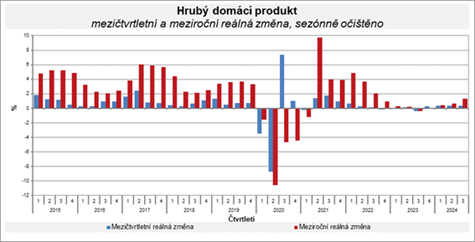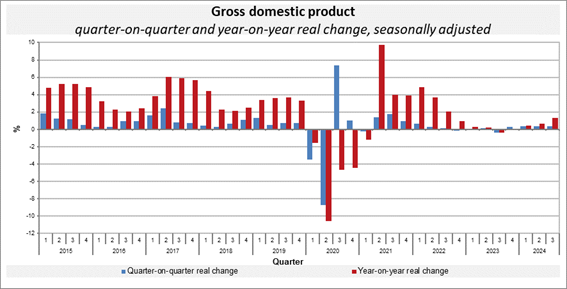Dluhopis je cenný papír, jehož držitel (věřitel) půjčuje emitentovi (dlužníkovi) určitou částku na předem stanovenou dobu získává za pravidelný úrok. Dluhopisy vydávají vlády, města, společnosti nebo jiné organizace, které potřebují získat kapitál. Na oplátku emitent slibuje, že k určitému předem definovanému datu splatí nominální hodnotu dluhopisu a během trvání dluhopisu bude pravidelně vyplácet úroky.
Historicky nejnižší úrokové sazby a jejich vliv na dluhopisy
V letech 2018–2020 bylo za extrémně nízkých, a do budoucna sotva opakovatelných, úrokových sazeb vydáno velké množství dluhopisů. Tehdy, vzhledem k nulovým úrokovým sazbám, byl velký zájem drobných investorů o korporátní dluhopisy a řada firem toho v dobré víře využila. Vzhledem k časté době splatnosti kolem 5 let dochází k nyní jejich splatnosti.
V business plánech sestavených v době emise se logicky nepočítalo s nečekaně vysokou mírou inflace, téměř nulovým růstem HDP České republiky, globálním makroekonomickým a geopolitickým vývojem a odpovídajícím ekonomickým vývojem v České republice.
Vývoj HDP od roku 2015 dle Českého statistického úřadu.

Rizika nezajištěných firemních dluhopisů
Firemní dluhopisy jsou mezi menšími investory často vyhledávány pro své potenciálně zajímavé výnosy a investoři je plánují držet až do jejich splatnosti. Pokud nabídka na první pohled působí mimořádně výhodně —například garantuje velmi vysoký výnos i nad 10 % p. a. — měl by investor zpozornět.
Mnoho investorů chybně předpokládá, že dluhopisy jsou automaticky garantované či zajištěné, díky čemuž nemohou přinést investorovi ztrátu. Investice do dluhopisů totiž stále nese rizika, především kreditní (bonita emitenta) a úrokové (citlivost ceny na sazby).
Investor by se měl vyvarovat dluhopisů od finančně slabších či netransparentních emitentů, kteří nabízejí výrazně vyšší výnosy než trh. To může signalizovat vyšší riziko finančních potíží. Naopak u emisí stabilnějších firem je toto riziko nižší. V případě nižších úrokových sazeb je úrokové riziko menší, ale stále vyžaduje obezřetnost. Celkově platí, že i firemní dluhopisy jsou investice s určitými riziky. Proto je důležité, aby investoři pečlivě zvažovali své možnosti a byli si vědomi všech rizik spojených s investováním do dluhopisů.
Dluhopis je investiční nástroj, kde investor má předem daný omezený zisk, ale nese neomezené riziko v případě úpadku emitenta Vždy je lepší být obezřetný a informovaný než se nechat unést lákavými nabídkami dluhopisů.
Salutem Fund
Salutem Fund je primárně zaměřený na rezidenční nemovitosti držené ve svém portfoliu, které vykazují vyšší odolnost vůči ekonomickým výkyvům a umožňují získat výnos jak z prodeje, tak z pronájmu. Ve své třídě akcií PIA fond investorům nabízí jistý roční výnos 6,3 %, a to i v případě horšího výsledku fondu.
Tyto preferované výnosy jsou zajištěny zakladateli fondu vlastním kapitálem (třída akcií VIA) a zakladatelé navíc začnou vydělávat až v momentě, kdy jsou uspokojeny nároky investorů – držitelů prioritních investičních akcií PIA. V současné době je poměr objemu akcií VIA x PIA přibližně 8,5: 1.
Stabilita fondu je dána i jeho nízkým zadlužením, celkové závazky fondu činí pouze třetinu jeho aktiv.
Výhody složeného úročení v porovnání s fixními kupónovými platbami
Držitel dluhopisů inkasuje svůj výnos pravidelně, a nemá možnost využít složeného úročení. Naopak v případě Salutem Fund je zvyšování výnosů složeným úročením jeho základním principem. To vede ke garantovaným výnosům:
- 20,1 % za 3 roky
- 35,7 % za 5 let
Navíc jsou výnosy z akcií PIA po 3 letech držení osvobozeny od daně z příjmu fyzických osob, na rozdíl od úroků z dluhopisů, které podléhají 15% srážkové dani. Výnosu fondu 6,3 % p. a. odpovídá výnos dluhopisu 7,4 %, o složeném úročení navíc ani nemluvě.
Flexibilní vs. fixní investiční horizont
Doba držení akcií fondu je časově neomezená, zatímco doba držení dluhopisu je dána termínem její splatnosti. I když by investor měl o inkasované úroky zájem i nadále, není to možné. Naopak v případě fondu závisí doba držení jeho akcií pouze na individuálním rozhodnutí investora a není nijak časově omezena.
Investice do Salutem Fund – třída akcií PIA – představuje výhodnější alternativu než je nákup dluhopisů, a to jak z pohledu výnosu, tak rizika.
?? Understanding the Risks of Unsecured Corporate Bonds
A bond is a financial instrument where the holder (creditor) lends a certain amount to the issuer (debtor) for a predetermined period, earning regular interest. Bonds are issued by governments, municipalities, companies, or other organizations that need to raise capital. In return, the issuer promises to repay the nominal value of the bond on a specific maturity date and to pay interest regularly during the bond’s term.
Historically Low Interest Rates and Their Impact on Bonds
Between 2018 and 2020, a higher number of bonds were issued at extremely low interest rates, which are unlikely to be repeated in the future. At that time, due to near-zero interest rates, there was significant interest from retail investors in corporate bonds, and many companies capitalized on this opportunity. Given the typical maturity period of around five years, these bonds are now reaching maturity.
Business plans prepared at the time of issuance naturally did not anticipate unexpectedly high inflation rates, nearly zero GDP growth in the Czech Republic, global macroeconomic and geopolitical developments, and the corresponding economic trends within the country.
GDP Development Since 2015 According to the Czech Statistical Office.

Understanding the Risks of Unsecured Corporate Bonds
Retail investors often seek after corporate bonds for their potentially attractive yields, and investors plan to hold them until maturity. If an offer appears exceptionally advantageous at first glance—for example, guaranteeing a very high yield exceeding 10% per annum—investors should exercise caution.
Many investors mistakenly assume that bonds are automatically guaranteed or secured, and therefore cannot incur a loss. However, investing in bonds still carries risks, primarily credit risk (issuer’s creditworthiness) and interest rate risk (price sensitivity to interest rate changes).
Investors should avoid bonds from financially weaker or non-transparent issuers who offer significantly higher yields than the market. This can signal a higher risk of financial difficulties. Conversely, this risk is lower with issuances from more stable companies. Even in the case of lower interest rates, the interest rate risk is smaller but still requires caution. Overall, even corporate bonds are investments with certain risks. Therefore, it is crucial for investors to carefully consider their options and be aware of all the risks associated with investing in bonds.
A bond is an investment instrument where the investor has a predetermined, limited profit but bears potentially unlimited risk in the event of the issuer’s default. It is always better to be cautious and informed than to be swayed by enticing bond offers.
Salutem Fund
The Salutem Fund primarily focuses on residential real estate held in its portfolio, which exhibits higher resilience to economic fluctuations and allows for returns both from sales and rentals. In its PIA share class, the fund offers investors a certain annual yield of 6.3%, even in the case of poorer fund performance.
These preferred returns are secured by the founders‘ own capital (VIA share class), and the founders only start earning once the claims of investors—holders of preferred investment shares PIA—are satisfied. Currently, the volume ratio of VIA to PIA shares is approximately 8.5:1.
The fund’s stability is also ensured by its low leverage; the fund’s total liabilities amount to only one-third of its assets.
The Advantage of Compound Interest over Fixed Coupon Payments
Bondholders receive their returns regularly and cannot take advantage of compound interest. In contrast, increasing returns through compound interest is a fundamental principle of the Salutem Fund. This leads to guaranteed returns of:
- 20.1% over 3 years
- 35.7% over 5 years
Moreover, returns from PIA shares are exempt from personal income tax after a 3-year holding period, unlike bond interest, which is subject to a 15% withholding tax. A fund yield of 6.3% per annum corresponds to a bond yield of 7.4%, not to mention the benefits of compound interest.
Flexible vs. Fixed Investment Horizon: A Comparative Analysis
The holding period for fund shares is unlimited, whereas the holding period for a bond is determined by its maturity date. Even if an investor wishes to continue receiving interest payments, it is not possible once the bond matures. In contrast, with the fund, the holding period of its shares depends solely on the individual investor’s decision and is not time-restricted.
Investing in the Salutem Fund’s PIA share class represents a more advantageous alternative to purchasing bonds, both in terms of returns and risk.

 Sledujte nás pro
Sledujte nás pro








